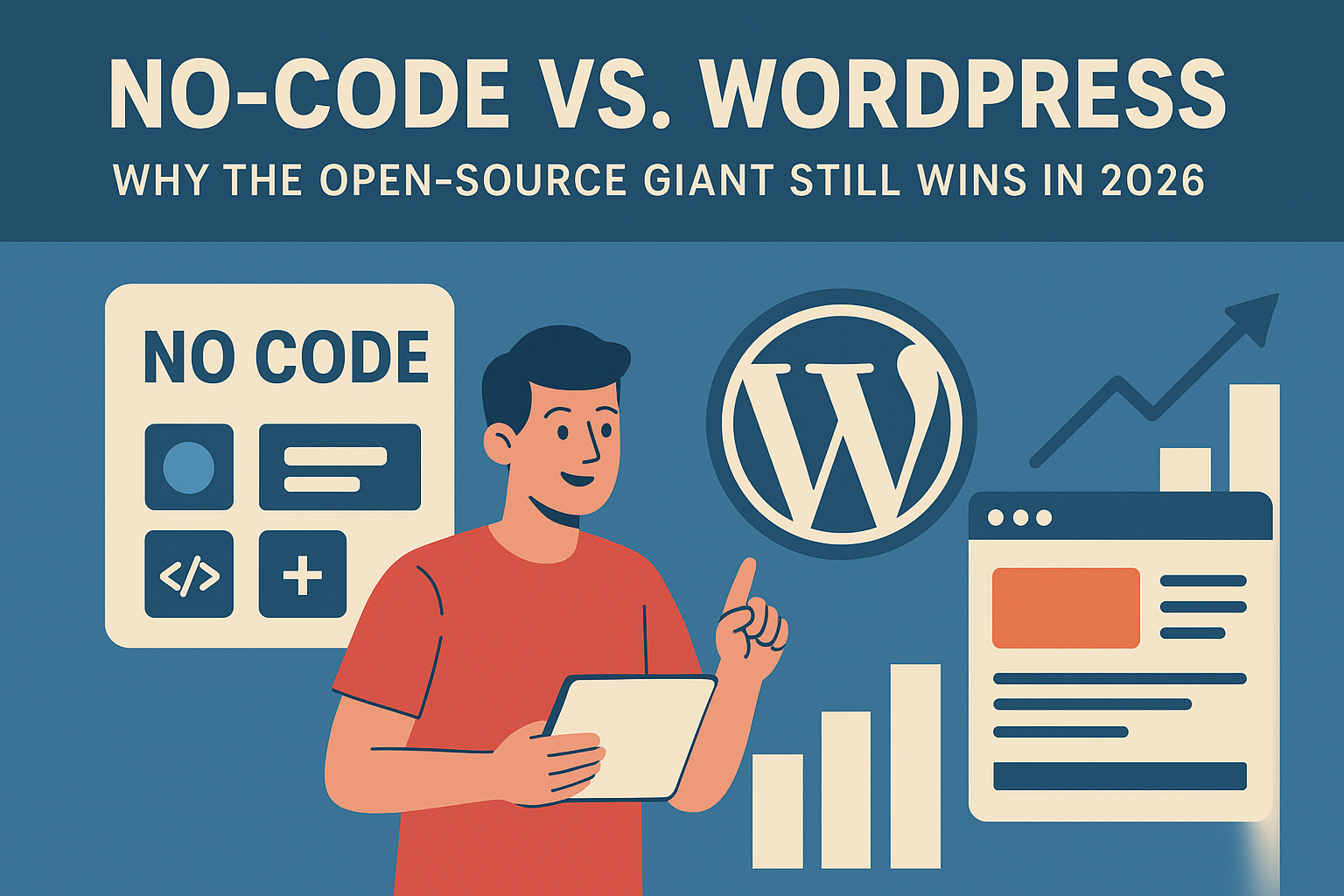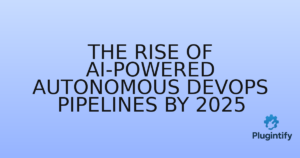No-Code vs. WordPress: Why the Open-Source Giant Still Wins in 2026
Introduction
Over the past few years, no-code platforms like Webflow, Bubble, and Wix have gained massive popularity — promising fast development without a single line of code. Yet, despite the hype, WordPress remains the backbone of over 40% of the web and continues to evolve rapidly. As we move into 2026, the open-source ecosystem shows no signs of slowing down.
So, why does WordPress still dominate in the age of AI and no-code tools? Let’s break down the key factors that keep it on top.
⚙️ 1. Open Source Means Infinite Flexibility
No-code tools offer convenience, but they come with limitations. You can only do what the platform allows — unless you pay extra for advanced features. WordPress, on the other hand, is fully open-source, giving developers and businesses complete freedom to modify, extend, and innovate.
Whether you want to add a custom plugin, integrate AI APIs, or create an entirely new content type, WordPress lets you own and control your stack — no hidden restrictions or subscription tiers.
💡 2. A Mature Ecosystem with Endless Plugins
WordPress has a 20-year head start. Its ecosystem includes more than 60,000 free plugins and countless premium ones. No-code tools can’t match this depth. You can build membership systems, eCommerce stores, booking apps, or learning platforms — all without reinventing the wheel.
In 2026, new AI-powered plugins are making things even better, automating content generation, SEO, and performance optimization directly inside the dashboard.
💰 3. Cost and Ownership: You’re in Control
With most no-code platforms, your app or website lives entirely on someone else’s servers. That means if the service changes its pricing or shuts down, your business is at risk.
WordPress flips that model. You host your own website anywhere you want, choose your own domain, and even move providers freely. This independence translates to long-term stability — a critical factor for serious businesses and agencies.
🚀 4. Developer and Community Power
The WordPress community remains one of the largest and most active on the internet. From local meetups to global WordCamps, thousands of developers collaborate, share tools, and continuously improve the core.
This global collaboration gives WordPress an unmatched pace of innovation. In 2026, features like Gutenberg’s full-site editing and AI-driven automation tools are setting new standards for open-source web creation.
🤖 5. AI + WordPress = Smarter Websites
No-code tools integrate with AI, but WordPress is going further. Developers can now embed AI-powered assistants directly inside the dashboard to manage content, SEO, and support.
OpenAI, Hugging Face, and custom LLMs can all be linked through REST APIs or custom plugins — making WordPress not just a CMS, but a full AI-ready digital platform.
🧱 6. Block-Based Design Is Bridging the Gap
One major advantage no-code tools had was design simplicity. But WordPress’s block-based editor (Gutenberg) is quickly closing that gap. Drag-and-drop layouts, reusable blocks, and modern design frameworks make building beautiful sites faster than ever — without leaving the open-source ecosystem.
For developers, blocks are also extendable via React, combining the ease of no-code with the power of custom code.
📈 7. WordPress Is Evolving into a Full Web Platform
Beyond blogging, WordPress now powers SaaS tools, mobile app backends, and headless applications using frameworks like Next.js or Flutter. This adaptability makes it far more than a website builder — it’s the foundation of the next generation of digital platforms.
🎯 Conclusion: The Freedom Factor Still Wins
While no-code platforms are great for rapid prototyping, WordPress remains unbeatable for scalability, control, and long-term growth. The combination of open-source flexibility, community innovation, and new AI capabilities ensures that WordPress will thrive well beyond 2026.
Stay updated on the future of WordPress and plugin development at Plugintify.com.




